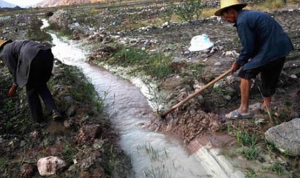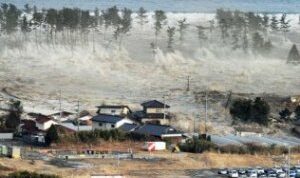 Around 1630 BC, a super-volcano blew apart the Aegean island of Santorini, an event so violent that some theorists say it nurtured the legend of Atlantis.
Around 1630 BC, a super-volcano blew apart the Aegean island of Santorini, an event so violent that some theorists say it nurtured the legend of Atlantis.
More than three and a half millennia later, the big blast is yielding forensic clues which help the search to predict future cataclysmic eruptions, scientists said on Wednesday.
Bigger than the destruction of Indonesia’s Krakatoa in 1883, the Santorini event was a so-called caldera eruption, a kind that happens mercifully only at intervals of tens of thousands of years, sometimes far more.
The chamber of a volcano becomes progressively filled with magma but lacks vents from which to discharge this dangerous buildup of gas and molten rock.
The pressure cooker culminates in catastrophe, ripping off the top of the volcano and leaving a depression called a caldera, the Spanish word for cauldron.
One of the great unknowns is when a caldera-type episode is in the offing.
That question is a particular concern for Yellowstone Park in Wyoming, a truly massive volcano classified as “high-threat” by the US Geological Survey (USGS).
Vulcanologists led by French-based Timothy Druitt scrutinised crystals of a mineral called feldspar that had been ejected from the Santorini eruption.
They looked for traces of magnesium, strontium and titanium, deposited in waves over thousands of years by the slowly advancing magma. The chemicals, they found, were a telltale of events over time.
From these signatures, the picture that emerges is of final, fatal spurts of magma injection which happened in the last decades — maybe even just the final months — before the great eruption.
The study, reported in the journal Nature, chimes with other research that suggests magma reservoirs in caldera volcanoes undergo a “pulsatory” buildup which probably accelerate before eruption.
If so, the findings are useful for vulcanologists poring over Yellowstone and other hotspots. They could detect such pulses using satellite technology, which records ground deformation over time as the volcano bulges, and ground-motion sensors.
But only close familiarity helps build a “pulse” model which gives a good idea of when a volcano is about to blow its lid.
“Long-term monitoring of large, dormant caldera systems, even in remote parts of the world, is essential if late-stage growth spurts of shallow magma reservoirs are to be detected well in advance of caldera-forming eruptions,” says the paper.
Also called the Minoan Eruption, the Santorini event spewed out up to 60 cubic kilometres (14.4 cubic miles) of material, causing ash clouds that devastated Bronze Age civilisations in the Aegean.
Some theorists say the event inspired Plato’s tale, written some 1,300 years later, of a circular island-empire inhabited by people of great culture and wealth, that sank to the depths of the sea in a single day and night of earthquakes and floods.




